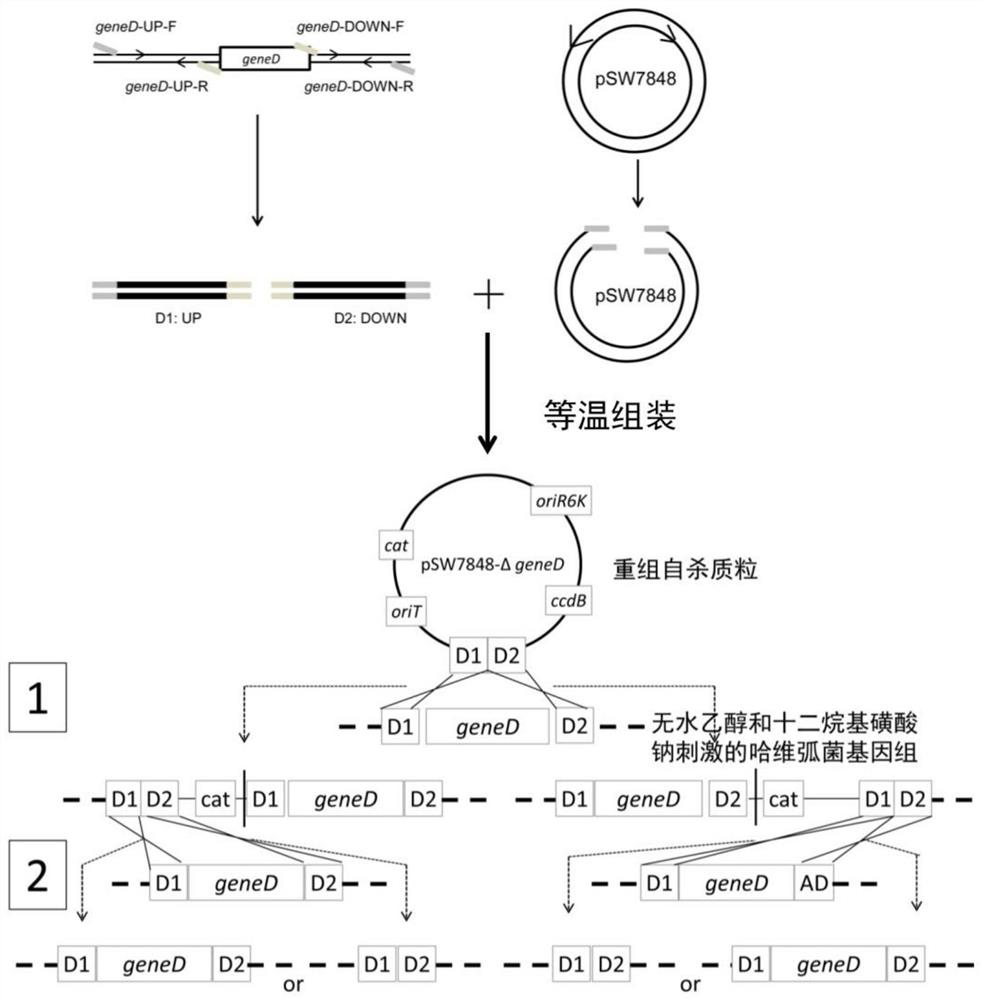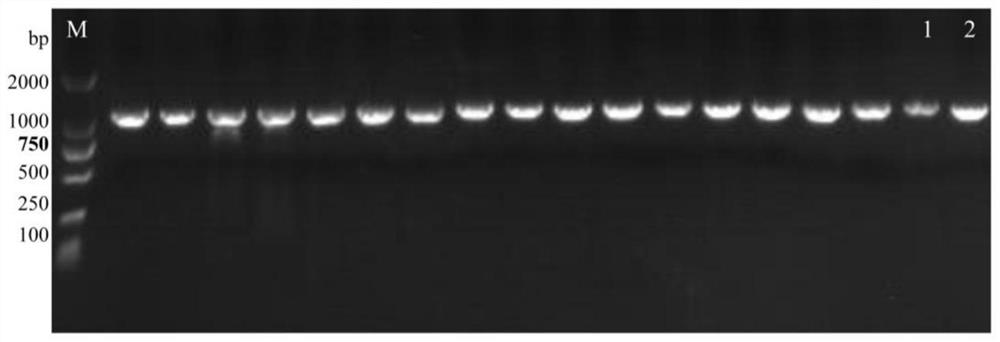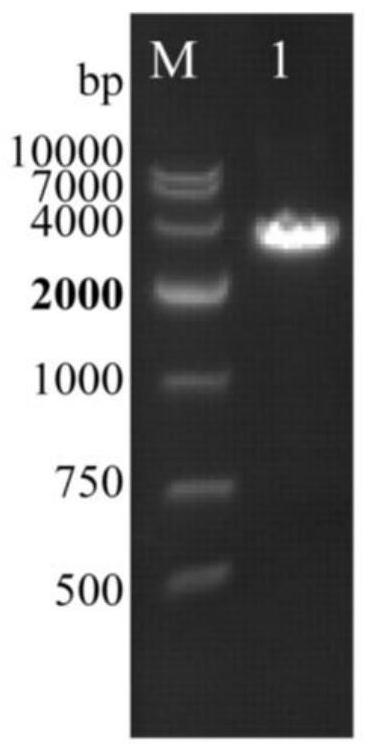Site-specific gene knockout method of vibrio harveyi based on absolute ethyl alcohol or sodium dodecyl sulfate stimulation
A technology of sodium dodecylsulfonate and Vibrio harveylius, which is applied in the direction of microorganism-based methods, biochemical equipment and methods, and the use of added compounds to stimulate growth, etc., and can solve the problems of non-directional mutation genes, restriction genetics, Achieving the effects of not being prone to polarity effects, simple operation, and clear purpose due to heavy workload
- Summary
- Abstract
- Description
- Claims
- Application Information
AI Technical Summary
Problems solved by technology
Method used
Image
Examples
Embodiment 1
[0063] Taking the gene hsdM (type I restriction enzyme, M subunit) as an example to illustrate the steps of targeted gene knockout in Vibrio harveyli based on the stimulation of organic substance absolute ethanol ( figure 1 ).
[0064] The ORF of the hsdM gene (SEQ ID NO.1) is 1500 bp in full length and can encode the type I restriction modification system M subunit HsdM consisting of 499 amino acids. HsdM is one of the host specificity determinants (hsd) of the type I restriction modification system, which is responsible for the methylation modification enzyme cleavage (Modification subunit, M) of non-methylated nucleotide sequences. Metastasis has a certain regulatory effect.
[0065] The hsdM gene knockout strain obtained in this study provides a premise for in-depth study of the function of the hsdM gene, and the elucidation of the gene function will help to further analyze the regulatory mechanism of horizontal gene transfer in Vibrio harveylius, and may serve as a way t...
Embodiment 2
[0112] Taking the gene hsdR (type I restriction enzyme, R subunit) as an example to illustrate the steps of realizing targeted gene knockout in Vibrio harvelis based on the stimulation of the organic substance sodium dodecyl sulfate ( figure 1 ).
[0113] The ORF of the hsdR gene (SEQ ID NO.3) is 3063bp in full length, and can encode the type I restriction modification system R subunit HsdR consisting of 1020 amino acids. HsdR is one of the host specificity determinants (hsd) of the type I restriction modification system, responsible for the restriction subunit (R) of non-methylated and mismethylated nucleotide sequences, and has been reported to be effective at the bacterial level Gene transfer has a certain regulatory effect.
[0114] The hsdR gene knockout strain obtained in this study provides a premise for in-depth research on the function of the hsdR gene, and the elucidation of the gene function will help to further analyze the regulatory mechanism of horizontal gene t...
PUM
 Login to View More
Login to View More Abstract
Description
Claims
Application Information
 Login to View More
Login to View More - R&D
- Intellectual Property
- Life Sciences
- Materials
- Tech Scout
- Unparalleled Data Quality
- Higher Quality Content
- 60% Fewer Hallucinations
Browse by: Latest US Patents, China's latest patents, Technical Efficacy Thesaurus, Application Domain, Technology Topic, Popular Technical Reports.
© 2025 PatSnap. All rights reserved.Legal|Privacy policy|Modern Slavery Act Transparency Statement|Sitemap|About US| Contact US: help@patsnap.com



